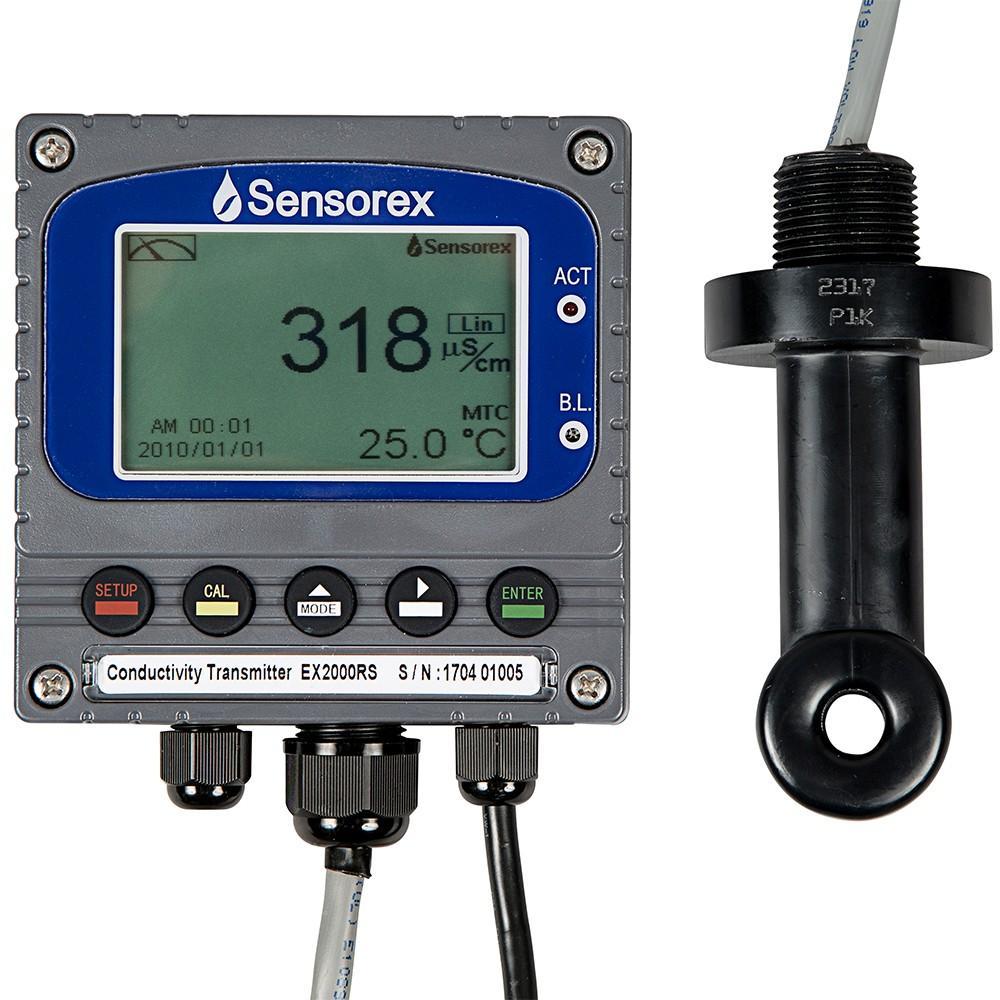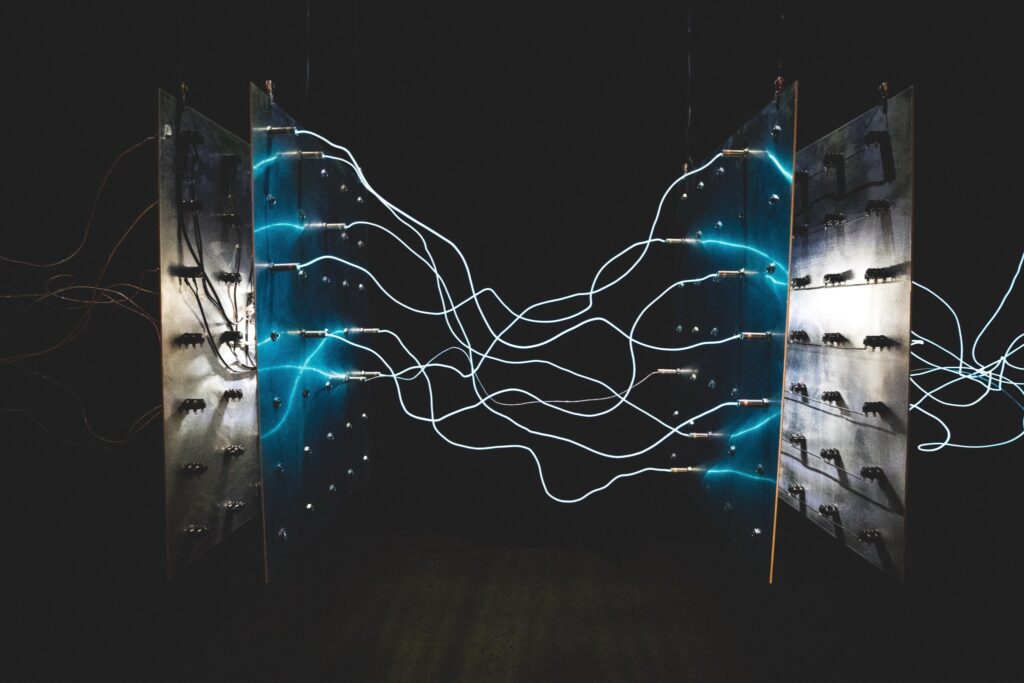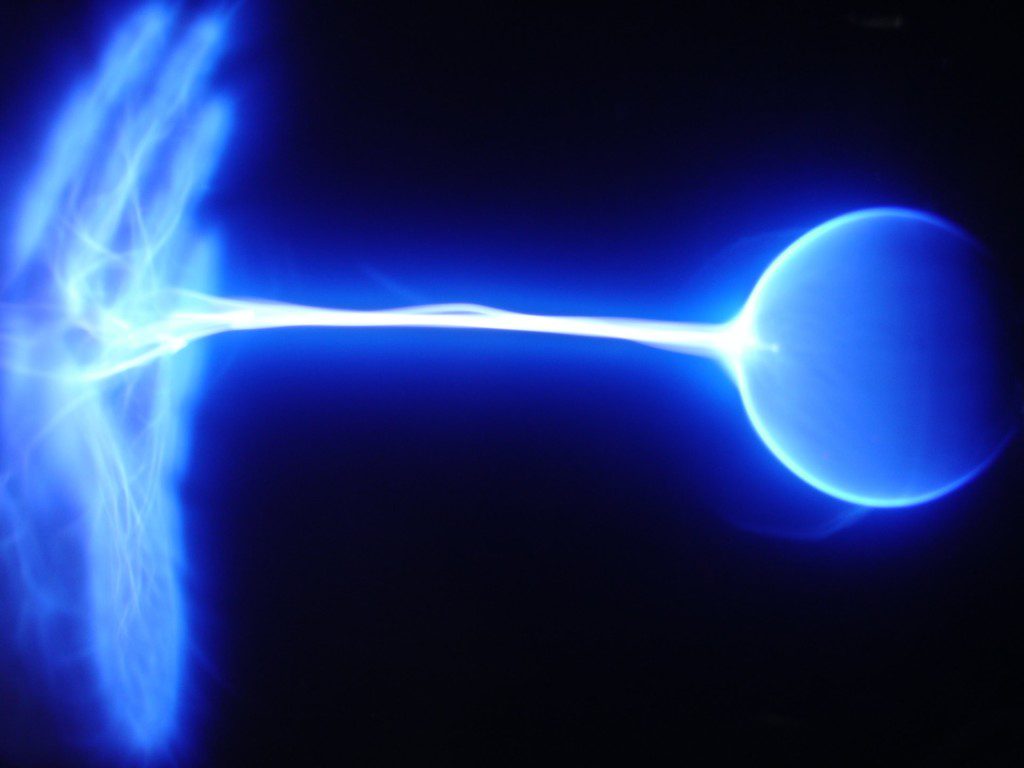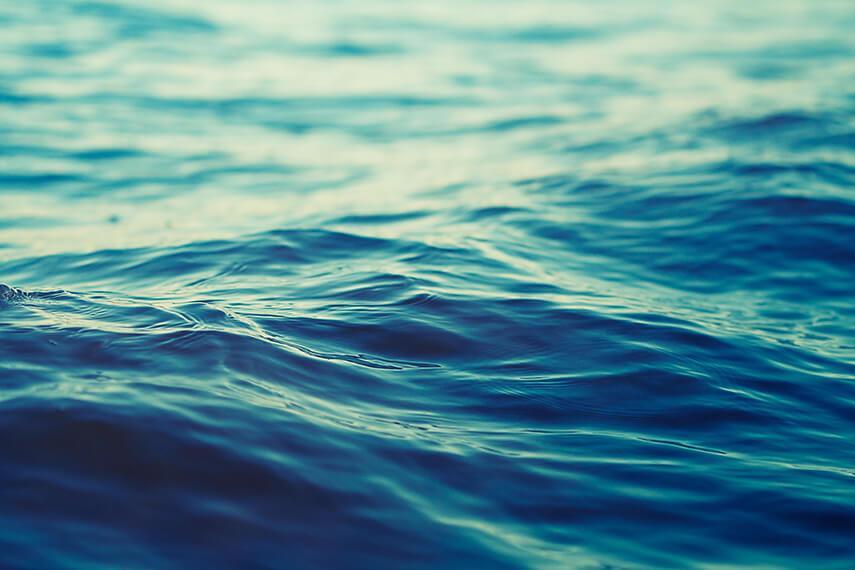08/14/2023 | Conductivity | 9 MINUTE READ
Toroidal vs. Contacting Conductivity Sensors: A Comparative Analysis

From water treatment plants to manufacturing facilities, measuring conductivity is an essential aspect of maintaining water quality. Conductivity measurements are designed to give you a better idea of a solution’s ability to conduct an electrical current. If you receive high conductivity readings, this indicates that there’s too much dissolved content in your water, which means that contaminant levels are high.
Many industrial processes require low conductivity levels to maintain optimal results. When you’re looking for the right conductivity sensors, there are two options for you to consider, which include a toroidal conductivity sensor and a contacting conductivity sensor. While both sensors provide accurate readings, the one that works for you depends on the application it’s being used for. Below is a detailed comparative analysis between these two sensors that can guide you through the decision-making process.

Introduction
While conductivity measurements can be helpful when used in any application, they are particularly important for industrial processes. Throughout many industries, conductivity measurements are used to monitor pollutant concentrations, the purity of water, and wastewater discharge. The Environmental Protection Agency (EPA) maintains strict regulations regarding the concentration of contaminants in wastewater discharge.
Before industrial facilities send wastewater into the environment, they must treat it to remove certain contaminants. Once specific treatments are applied, the water needs to be measured with a conductivity sensor to determine if the treatments have been effective. The facility can only discharge the water when conductivity levels are low enough to meet EPA standards.
The two types of conductivity sensors you can buy for your facility are toroidal conductivity and contacting conductivity sensors. While these sensors are capable of providing similar results, they come with different components and are built for different purposes.
Toroidal Conductivity Sensors
Toroidal conductivity sensors have a working principle that involves two toroids inducing currents to promote conductivity measurement. These wire-wound toroids are housed in a plastic body. In the event that voltage is applied to a single toroid, it will create an ionic current in the surrounding solution. An additional electric current is then created around the second toroid, after which a full measurement is taken.
The current that’s applied to the second toroid is based on the solution’s ability to conduct electricity. The overall conductance depends on the ion concentration as well as the solution’s length and area. Keep in mind that the sensor’s physical dimensions will determine the dimensions for the path that the current flows through.
Since the measurement is designed to provide you with the concentration of ions, it’s important to take the sensor dimensions and conductivity into account. The correction factor that’s used in this process is the cell constant. As for the final conductivity measurement, it uses the following calculation:
Conductance x Cell constant = Conductivity reading
The cell constant is a type of calibration that converts conductance into conductivity, the latter of which is measured with mS/cm. It’s possible for the cell constant to be influenced by how close the vessel walls are to the sensor, which is referred to as the wall effect. Non-conductivity and conductive walls have the opposite effects. If the vessel is metal, you’ll have a higher amount of induced current, which means that the conductivity reading will be lower. Plastic walls lead to the opposite effect wherein the conductivity readings are higher.
Since a certain degree of the wall effect is always present, it’s unnecessary to calibrate toroidal sensors in the factory. They should be calibrated while in the field. Proper calibration is necessary if you wish to obtain accurate measurements with toroidal sensors. You can perform calibration against a referee meter and sensor or a standard solution.

Contacting Conductivity Sensors
Contacting sensors are designed to measure conductivity through electrodes in a solution. They can provide you with precise readings if you use them in the right applications. These sensors are most often placed in boilers, cooling towers, and other environments that aren’t too oily. If the water contains too many contaminants, a contacting sensor might not give you accurate results.
Before you use a contacting conductivity sensor, you should know that they come in many different cell constants to accommodate a wide range of conductivity readings. If you choose to use a contacting sensor in a cooling tower, these sensors can be applied to water with conductivity as high as 30,000 μS/cm.
You can obtain low-pressure polypropylene sensors that are made with stainless steel or graphite electrodes. These devices can be installed directly in the water. If you obtain a high-pressure sensor that accommodates PSI readings of up to 300, it’s likely that the sensor is made from PEEK or stainless steel.
When you purchase a contacting sensor for a boiler, make sure it supports the water temperature that the boiler is often situated at. A solution’s conductivity can change slightly based on the water’s temperature. These sensors are available as passive or active sensors. Passive sensors don’t require an external power connection. They also don’t contribute something to the water in order to obtain measurements. As for active sensors, they require power sources and must be used alongside a transducer.
Comparison of Toroidal and Contacting Sensors
The main difference between toroidal and contacting sensors involves the method they use to obtain conductivity measurements. Toroidal sensors use induced electric currents to obtain precise readings. In comparison, contacting sensors are placed directly into the water to receive a signal. Toroidal sensors are designed to be highly linear and accurate, which makes them easy to calibrate. The cell constant should always be relatively close to the value you obtain at the calibration point.
When looking specifically at contacting sensors, they are typically accurate but can suffer from erratic measurements based on the polarizing effects that occur when using alternating voltages. The calibration process for a contacting sensor is straightforward. First, put the sensor in a standard solution before adjusting the readings to match the standard solution’s conductivity. To ensure an accurate calibration, select a calibration standard that’s close to the midpoint of the sensor’s conductivity range.
To effectively calibrate a toroidal sensor, you can use one of the two methods mentioned previously. If you opt for a referee meter and sensor, this option allows you to use a device that has already been calibrated and is known to provide precise readings. You can use the referee instrument to perform calibration in-process or as a grab sample.
Calibrating the sensor against a standard solution can only be done after you remove the sensor from process piping. Only use this option if calibration takes place in a container that’s identical to the piping or if wall effects are entirely absent. This calibration procedure is similar to the one that’s used with contacting sensors.

Application Considerations
Both sensors excel in different scenarios. You should use toroidal sensors in high-conductivity applications, which means that they’re most effective when measuring conductivity in clean environments, seawater, and chemicals. Contacting sensors are most accurate when you use them in boilers, reverse osmosis applications, and cooling towers.
There are numerous factors that might influence your sensor choice, which include the properties of the solution, the sensor’s conductivity range, and the installation environment. If you expect the solution to be highly contaminated, use a toroidal sensor to increase your chances of obtaining the right readings the first time.
Practical Use Cases
Toroidal conductivity sensors are used in almost every industrial facility. For instance, beverage production plants rely on toroidal sensors to receive highly accurate readings, which is essential to ensure the production process occurs without issue. In fact, the food and beverage industry often uses ultra-pure water to maintain quality. During the manufacturing processes, conductivity and pH readings are taken to verify that the water is free from impurities.
Facilities that already have clean water may use contacting conductivity sensors because they are more affordable and can still provide accurate results. Contacting sensors only have issues when the water consists of high concentrations of chemicals, oily substances, or contaminants. Your choice of sensor directly impacts the efficiency, maintenance, and accuracy of your process. Toroidal sensors are oftentimes considered to be the better option because of their ability to be used in tough environments.
Pros and Cons
The main advantages of toroidal sensors include:
- Consistent reliability
- Resistance to fouling issues
- Ideal for submersible applications, corrosive water, or high conductivity
- Longevity
A couple issues with toroidal sensors include:
- Much higher price in comparison to contacting sensors
- Unreliable when used in low-conductivity water
The primary advantages of using contacting sensors include:
- Affordable pricing
- Precise if used to measure low-conductivity water
- Versatile
There are several issues associated with using contacting sensors, which involve:
- Less accurate in high conductivity environments
- Prone to fouling
- Require regular maintenance
Use these factors to determine which sensor is right for your facility. If you need to measure solutions that have high pollutant concentrations, you should use a toroidal sensor. When the water has low conductivity, it’s best to use a contacting sensor for more reliable readings. If cost is an issue, you should consider buying contacting sensors.

Conclusion
While toroidal and contacting sensors are both effective at reading the conductivity of a specific solution, there are some key differences that should weigh on your decision about which one to purchase. The inductive system used by a toroidal sensor is often more accurate than the alternative. Contacting conductivity sensors require more frequent calibrations to maintain accuracy.
Before you choose a sensor type, identify the requirements for the specific application in your facility. With these requirements in hand, you should have all the details you need to select the right sensor. When you’re buying any type of water quality sensor, carefully evaluate your needs. Consider the factors that were discussed in this guide to make a more informed decision.
Posted by Dominic O'Donnell on August 14, 2023
Sensorex is a global leader in the design and manufacture of quality sensors for water quality and process applications. The company offers more than 2000 sensor packages for pH, ORP, conductivity, dissolved oxygen, free chlorine, chlorine dioxide, UV transmittance and other specialty measurements, as well as a full line of sensor accessories and transmitters. Its expert technical support engineers solve analytical sensor challenges with custom designs and off the shelf products.




